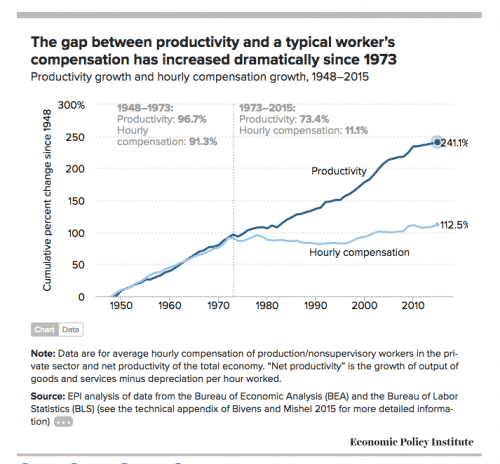Some thoughts on healthcare, inequality, and Baumol’s disease
William Baumol, one of the most influential economists to never win the Nobel Memorial Prize in Economic Sciences, died yesterday. He was 95. He co-wrote the book that introduced me to economics some 30 years ago.
@rodrikdani My Economics intro class used his book as I remember it. I think I still have it somewhere pic.twitter.com/8W08UXEtaK
— Edward Harrison (@edwardnh)
So I mourn his passing.
Now, on a couple of occasions, I have mentioned the shortcomings of the Baumol and Blinder book we used way back then. It doesn’t mention private debt for example. It also gets crucial bits of the money multiplier story wrong. But comments by co-author Alan Blinder back in 2012 show how far the economics profession has come.
What’s more, Baumol was a giant in promoting entrepreneurship. And most importantly here, his theory on rising costs in labor intensive industries – Baumol’s cost disease – is something that the Nobel committee considered in 2003 and should have given him an award for.
The basics are simple: rising wages across the economy put huge pressure on labor intensive economic sectors because they cannot use productivity gains to reduce the impact of labour costs on their income statement. The result is a cost pass-through to consumers in those sectors of the economy. We’re talking about essential economic sectors like healthcare and education. This is something Baumol sketched out back in the 1960s. And he has proved right in the intervening 50-odd years on how these sectors have become relatively more expensive. You can see a full write-up here at Vox from yesterday.
I thought about this when I read today that the local healthcare provider here in Suburban Maryland was trying to jack up Obamacare plan insurance rates by 52%. My first thought was about the broad middle class – people who aren’t poor but who would feel serious pain if rates do go up dramatically. Now obviously, if the Obamacare subsidies get taken away by Trumpcare, then the working poor will be hit even harder. But I think the issue here goes to inequality either way.
You may have seen that worrying chart on the productivity-pay gap.
Source: Economic Policy Institute
It basically shows the gains of productivity growth going to the captains of industry rather than wage earners. Basically, it’s rising inequality boiled down into one chart. And this is a big problem if the picture Wil Baumol painted about industries like healthcare is true. If you think about CareFirst’s price hikes for a second, it means that average wage earners will be under severe economic pressure.
Yes, the cost of other goods and services will go down, making healthcare still affordable for the mean American household. But in the real world – one beset by rising wealth and income inequality, it is the median that counts. There are a lot of households that are going to be squeezed by healthcare costs – so much so that, unless they run up a lot of debt, their spending will be crimped.
Why this matters. Baumol’s disease in a world of inequality is a recipe for lower growth. And that’s a world in which political radicalization increases. Unless we solve this problem, we are due for some serious economic and political turbulence as healthcare becomes less and less affordable for a large segment of our population.

Comments are closed.